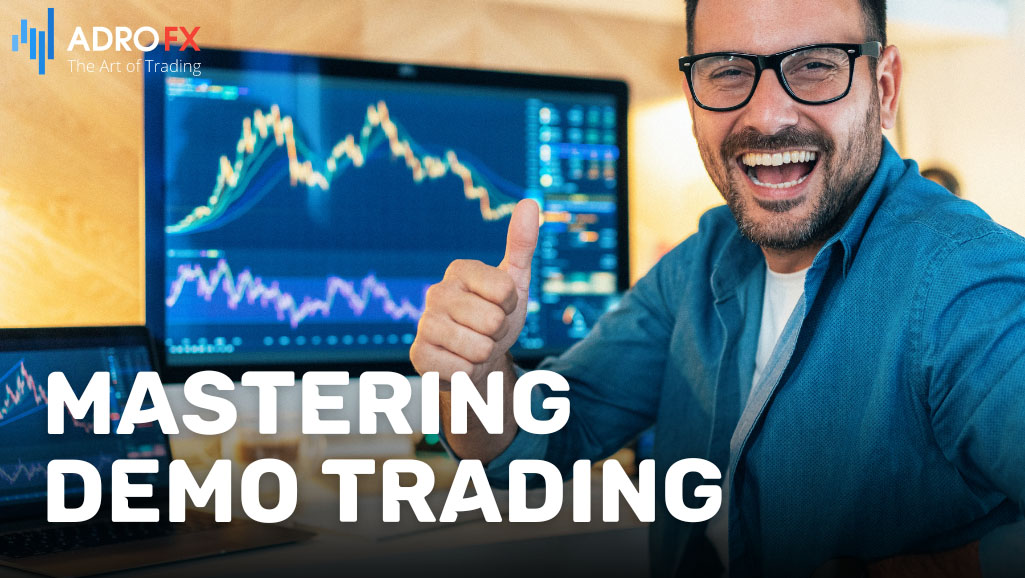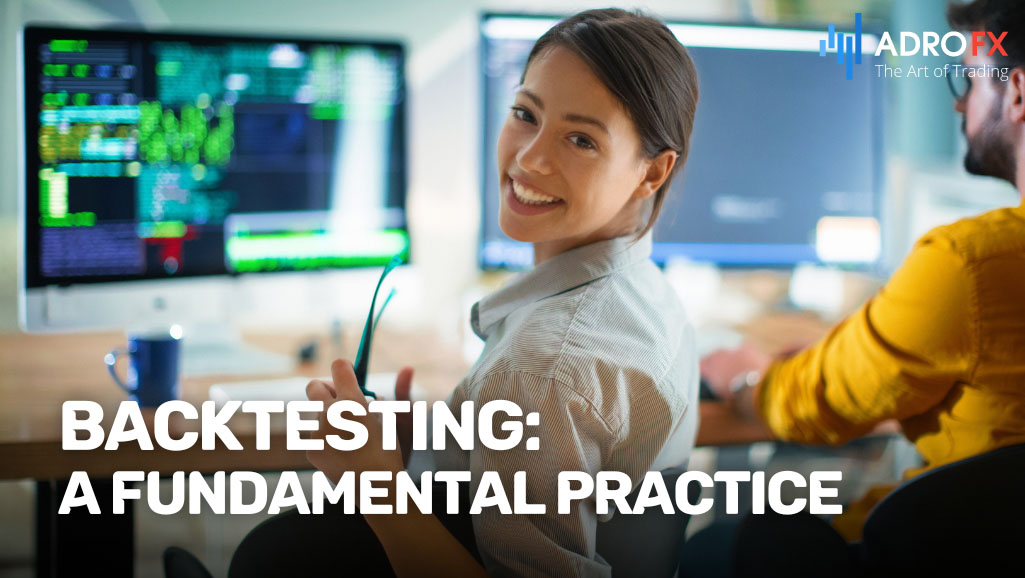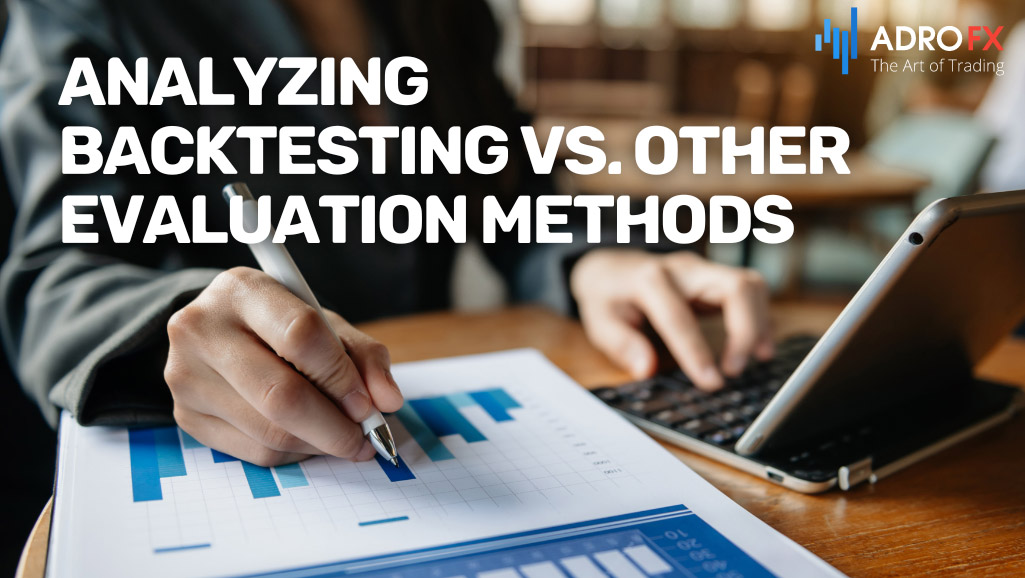The Dynamic Duo: Exploring Demo Trading and Backtesting in Forex Strategies

In the high-speed realm of forex trading, where fortunes can shift in an instant, establishing a robust strategy and thorough groundwork is paramount. The forex market, renowned for its intricate nature and volatility, presents traders with unparalleled opportunities as well as substantial risks.
To navigate this intricate terrain effectively, traders must employ demo trading and backtesting – two indispensable tools pivotal in crafting efficient strategies and making well-informed decisions devoid of immediate financial jeopardy.
This piece delves into the significance of demo trading and backtesting within the realm of forex trading. We will explore the definitions and objectives of these methodologies, shed light on their fundamental attributes, and elucidate the manifold benefits they bestow. From honing skills and testing strategies to fostering confidence, comprehending and harnessing these foundational practices equips traders to elevate their trading acumen and bolster their prospects in the dynamic forex market.

Mastering Demo Trading: Unveiling the Dynamics
Demo trading, also referred to as practice trading, offers a simulated trading environment that mirrors real market conditions, albeit with virtual funds. This platform serves as a risk-free arena for traders to refine their strategies and acquaint themselves with the intricacies of forex trading without the fear of financial loss.
By embracing the features of demo trading, traders can significantly enhance their skills and preparedness for the dynamic forex market. These accounts utilize virtual funds, enabling traders to execute trades and experience market fluctuations in a controlled setting that replicates real-world scenarios. This authentic experience allows traders to explore various trading platforms, tools, and indicators, honing their strategies for future success.
Exploring the Advantages of Demo Trading
Demo trading serves as an invaluable platform for traders to grasp the nuances of the forex market. Through simulated trading, traders gain insights into market movements, chart analysis, and technical indicators, laying a solid foundation for their trading journey. Additionally, demo trading empowers traders to experiment with diverse strategies, assessing their effectiveness in a risk-free environment and refining their approaches accordingly.
Moreover, trading in a demo account cultivates confidence in traders' decision-making abilities. By analyzing the outcomes of their trades and comprehending the rationale behind their successes and failures, traders develop a sense of assurance in their strategies. This confidence becomes indispensable when transitioning to live trading, where real financial stakes are involved.
Navigating the Risks and Limitations
Despite its myriad benefits, demo trading is not devoid of risks and limitations. One of the primary challenges lies in its inability to fully replicate the emotional and psychological aspects of live trading. Without real financial stakes, traders may exhibit different behaviors and decision-making processes, potentially impacting their transition to live trading environments.
Furthermore, the absence of real financial risk in demo trading can diminish the importance of risk management. Traders may overlook the significance of prudent risk management practices, leading to higher risk-taking behaviors that could prove detrimental in live trading scenarios.
Additionally, differences in market execution and slippage between demo and live trading environments may create unrealistic expectations among traders. The discrepancy in execution speed and slippage could lead to misconceptions about order execution in live markets, necessitating adjustments when transitioning from demo to live trading.
Moreover, demo trading may instill unrealistic expectations among traders, especially if they achieve significant success in simulated environments. Overconfidence or unrealistic profit expectations could result in disillusionment and frustration when confronted with the unpredictability of live trading conditions.
Furthermore, while demo trading platforms strive to replicate real market conditions, they may not always accurately reflect the complexities of live trading environments. Variations in liquidity, market depth, and order book dynamics could hinder traders' ability to execute trades effectively and evaluate market movements accurately.
In conclusion, while demo trading is an invaluable tool for learning and skill development in forex trading, traders must navigate its limitations and risks judiciously. By acknowledging these challenges and implementing appropriate risk management strategies, traders can maximize the benefits of demo trading while preparing themselves for the realities of live trading environments.

Unraveling Backtesting: A Fundamental Practice
Backtesting stands as a pivotal process in forex trading, wherein trading strategies undergo scrutiny using historical data. By simulating trades based on past market conditions, traders gain insights into the potential effectiveness of their strategies, thus allowing them to validate and refine their approaches before deploying them in real-time trading environments.
The process of backtesting entails several steps. Initially, traders select a trading strategy they wish to evaluate and apply it to historical market data, comprising price movements, volumes, and other pertinent metrics. Ensuring the quality and comprehensiveness of the data is crucial for accurate results. Historical data is then imported into backtesting software or platforms, where the trading strategy is programmed and executed against the data. Subsequently, the software generates results that depict how the strategy would have performed, with key performance indicators such as profitability, win rate, and drawdown analyzed to gauge its effectiveness.
Unlocking the Benefits of Backtesting
Backtesting offers an array of benefits pivotal for success in forex trading. Its primary advantage lies in the validation of trading strategies through historical data analysis, providing traders with valuable insights into their potential future performance. Additionally, backtesting plays a vital role in risk management by identifying potential risks and weaknesses in strategies, enabling traders to make necessary adjustments to enhance their robustness and reliability.
Moreover, backtesting facilitates data-driven decision-making by deriving insights from actual historical performance. This reliance on empirical data minimizes the need for intuition and guesswork, leading to more consistent and dependable trading outcomes. Overall, backtesting empowers traders to refine their strategies with confidence, ensuring they are well-equipped to navigate the complexities of the forex market.
Navigating the Risks and Limitations
Despite its utility, backtesting comes with inherent risks and limitations that traders must navigate with precision. One such challenge is the assumption that past performance is indicative of future results, which may be flawed due to changing market dynamics over time. Moreover, the accuracy and completeness of historical data are paramount for effective backtesting. Poor-quality data can lead to flawed results and misguided trading decisions, emphasizing the need for reliable data sources and thorough validation processes.
Furthermore, over-optimization poses a risk wherein trading strategies are excessively tailored to historical data, leading to poor performance in live trading environments. Traders must guard against overly complex or rigid approaches that lack adaptability to changing market conditions, ensuring the robustness and effectiveness of their strategies in real-world scenarios.
Synergizing Demo Trading and Backtesting
Demo trading and backtesting serve as complementary methods that, when integrated, offer traders a comprehensive approach to strategy evaluation. While demo trading allows traders to refine their strategies in simulated real-time market conditions, providing practical insights into performance, backtesting offers a historical perspective, enabling traders to validate and optimize their strategies based on past data. By combining both methods, traders can gain a deeper understanding of their strategies' strengths and weaknesses across different market environments.
The integration of demo trading and backtesting provides several benefits for traders. It offers a holistic approach to strategy evaluation, allowing traders to assess their strategies from both historical and real-time perspectives. Leveraging insights gained from demo trading and backtesting, traders can refine their strategies more effectively, adapt to changing market conditions, and enhance overall trading performance.
To integrate demo trading with backtesting, traders can follow a systematic approach. Beginning with the development of a trading strategy based on market analysis and objectives, they can then use backtesting to validate and optimize the strategy using historical data. Once refined, traders can implement the strategy in a demo trading environment to assess its performance in simulated real-time market conditions. Continuous evaluation and adjustment based on feedback from both demo trading and backtesting ensure traders are well-prepared for live trading.

Analyzing Backtesting vs. Other Evaluation Methods
When comparing backtesting with alternative evaluation methods like scenario analysis and forward performance testing, it's crucial to consider their unique attributes and contributions to a trader's decision-making process. Each method offers distinct advantages and limitations, shaping the overall effectiveness of strategy evaluation differently.
Scenario analysis involves simulating hypothetical scenarios to gauge a strategy’s performance across varied market conditions. Unlike backtesting, which relies solely on historical data, scenario analysis allows traders to explore their strategies' resilience in diverse future scenarios. While backtesting provides insights into past performance, scenario analysis offers a forward-looking perspective, enabling traders to anticipate how their strategies might fare under different circumstances. However, scenario analysis also has limitations, including the subjective nature of scenario selection and the challenge of accurately predicting future market conditions.
Forward performance testing, also known as forward testing or live testing, involves applying a trading strategy to real-time market conditions to validate its effectiveness. Unlike backtesting and scenario analysis, which rely on historical or hypothetical data, forward performance testing evaluates strategies in the present moment, providing real-world validation of their performance. While offering valuable insights, forward performance testing also carries risks, including the potential for unexpected market events to impact strategy outcomes.
Final Thoughts
In the dynamic realm of forex trading, where fortunes can shift in an instant, the foundation of a solid strategy and thorough preparation is paramount. The forex market's reputation for complexity and volatility underscores both its allure and its risks, making it imperative for traders to arm themselves with effective tools for navigating this challenging terrain. Among these tools, demo trading and backtesting emerge as indispensable assets, offering traders a means to develop strategies and make informed decisions without immediate financial exposure.
This discourse has ventured into the significance of demo trading and backtesting in forex trading, exploring their definitions, purposes, distinguishing features, and myriad benefits. Mastery of these fundamental techniques can markedly enhance traders' skills, readiness, and overall performance in the ever-evolving forex landscape.
Demo trading serves as a fertile ground for traders to acquaint themselves with the intricacies of the forex market, experiment with diverse strategies, and fortify their decision-making prowess. Conversely, backtesting empowers traders to validate and refine their strategies using historical data, fostering a basis for more informed and systematic decision-making.
Yet, it's crucial to acknowledge that both demo trading and backtesting come with their own set of limitations and risks. Demo trading may fall short in replicating the emotional and psychological aspects inherent in live trading, while backtesting relies on assumptions about past performance to predict future outcomes, necessitating high-quality historical data for accuracy. Over-optimization poses another risk in backtesting, potentially leading to strategies ill-suited for live trading environments.
Nevertheless, the integration of demo trading and backtesting offers traders a holistic approach to strategy evaluation. Through this integration, traders gain invaluable insights into their strategies' strengths and weaknesses across varied market conditions, ultimately augmenting their trading acumen and heightening their prospects for success.
In summary, mastering the art of demo trading and backtesting is indispensable for traders seeking to navigate the intricacies of the forex market effectively. By integrating these tools into their trading routines, traders can refine their strategies, enhance their decision-making abilities, and chart a course toward greater success in their trading endeavors.
About AdroFx
Established in 2018, AdroFx is known for its high technology and its ability to deliver high-quality brokerage services in more than 200 countries around the world. AdroFx makes every effort to keep its customers satisfied and to meet all the trading needs of any trader. With the five types of trading accounts, we have all it takes to fit any traders` needs and styles. The company provides access to 115+ trading instruments, including currencies, metals, stocks, and cryptocurrencies, which make it possible to make the most out of trading on the financial markets. Considering all the above, AdroFx is the perfect variant for anyone who doesn't settle for less than the best.










